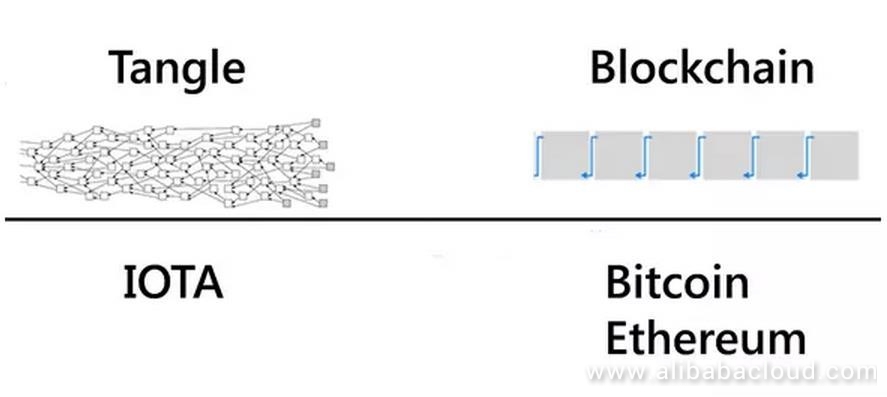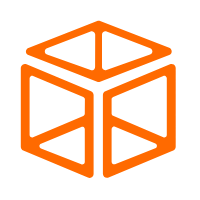Thanks to the distribution, enhanced encryption, and tracing features of blockchain, we can apply blockchain to Internet of Things (IoT) for automated transactions between "things". However, implementing this in the real world is complicated.
Currently, there are two methods to apply blockchain to IoT. The first is based on existing blockchain platforms (Ethereum and Hyperledger), and the second is a self-developed blockchain. The first method is feasible because the blockchain is originially intended to fix the inherent problems of IoT.
However, all the major blockchain technologies have problems, such as poor extensibility, low processing capability, and lack of dedicated technologies. Many people are doubtful whether blockchain can meet the requirements for IoT. Is it necessary to reform the blockchain to make it suitable for IoT?
The latest IOTA research indicates that the IoT indeed requires a dedicated "blockchain" technology, which is a distributed ledger technology getting rid of blocks and chains.
As a new type of digital encrypted currency, IOTA is not as famous as Bitcoin and Ethereum; however, you should not underestimate its potential because it has given 5000 times ROI to investors. It performs well in the competitive world of digital assets. Also, IOTA uses the Directed Acyclic Graph (DAG)-based tangle structure, which is different from the structure of a typical blockchain. Conceptually speaking, it is similar to blockchain, but it does not have blocks or chains, which makes it interesting.
As mentioned previously, IOTA uses tangle instead of blockchain. Therefore, the structure of IOTA is "IoT x tangle" instead of "IoT x blockchain." IOTA's tangle structure fixes many problems of the blockchain. Tangle could potentially be the next generation distributed ledger technology.
The service fee of Bitcoin is very high. It not cost effective to buy a cup of coffee using Bitcoin because the service fee may be higher than the price of a coffee. The high service fee makes the interoperability between machines or micro-trade between IoT devices impossible. IOTA is intended to fix this problem.
The relationship between IOTA and tangle is similar to the relationship between Bitcoin and blockchain. However, unlike blockchain, IOTA does not need to pay service fee to miners. In the tangle structure, there are no miners who validate transactions. Instead, every transaction initiator should authorize other two transactions. There is no miner in tangle, so the transaction initiator does not need to pay the transaction service fee.
This zero-service fee design is especially suitable for the data exchange in the future IoT era. Tangle eliminates the service fee, which cannot be achieved by blockchain.
To add a new transaction to the IOTA system, a user needs to pick two unconfirmed transactions and validate them randomly. Then the transaction to be added gets referenced to the two transactions and sent to the network waiting for validation and check. IOTA considers the computing capability as an element and inherent part of the transaction. Although the transaction is free of charge, a little Proof of Work (PoW) is required to prevent spamming.
In addition to the zero service fee, IOTA does not have a performance bottleneck unlike blockchain. The IOTA processing efficiency is proportional to the system size.
The figure above shows a typical tangle architecture. If you buy a bottle of yogurt in a supermarket, one block in the middle of the figure indicates this transaction. You will find that your transaction is confirmed directly or indirectly by referenced transactions.
Although the network is randomly distributed across different devices, you can broadcast the transaction to the entire network. Then, all nodes on the network will confirm the transaction as long as it is valid. IOTA is irrelevant to reward to miners, so there is no conflict or divergence between miners and traders. In the IOTA system, every participant contributes to confirm other transactions. They are both contributors and beneficiaries. The IOTA unifies the transaction initiators and verifiers.
In short, IOTA has three advantages: zero service fee, fast confirmation, and high security (especially for large networks). Theoretically, when the network is more substantial, transaction confirmation is quicker, and the network is more secure.
Another fantastic feature of IOTA is the hash algorithm. Its Proof-of-Work (PoW) algorithm is called Curl. IOTA uses trio logic, not binary logic, i.e., it uses a three-state storage mechanism. This mechanism improves performance in some situations, but the triologic processor is not accessible. Therefore, before initiating the IOTA project, the IOTA team was developing a triologic processor named JINN. The group planned to create a microprocessor for edge computing and fog computing, which allows devices to process data locally, implementing the digital economy between devices.
JINN is still in the early R&D stages. However, the IOTA team is ambitious and has dreams in the design of architecture, algorithm, and processor. The IOTA team hopes that the JINN processor can be more efficient at processing the trio logic algorithm, and they want to integrate JINN to IoT devices to implement fast and secure value exchange between devices.
Byteball and IOTA are two types of innovative currencies based on DAG. Although they use the DAG structure, they differ in bottom technology and development trend. For the comparison, see the following table:
| Feature | IOTA | Byteball |
|---|---|---|
| Transaction Confirmation | MCMC Consensus | Based on main chain |
| Transaction Speed | 1000+ Tps | 100+ Tps |
| Trade Service Fee | No | Yes |
| Total Number of Digital Coins | 2,779,530,283,277,761, not increased | 10^15, not increased |
| Anonymous Transaction | In development | Supported |
| Quantum Security | Supported | Not Supported |
| Theoretical Confirmation Time | Infinitesimal | 30s |
| Application Sectors | IoT | BitCoin replacement, smart contracts, anonymous fast transfer |
Among the founders of the IOTA team, come-from-beyond is the core developer, and the author of the white paper is Professor Serguei Popov. They have excellent capabilities and rich professional knowledge. Professor Serguei Popov is a Russian-Brazilian who obtained a doctor's degree in Brazil and is teaching math in Brazil now. As a mathematician, he is engaged in the study of random theory. The IOTA white paper written by him has been updated to version 1.4.
Anton, the founder of Byteball, is an excellent scientist and developer, and also the primary developer of Byteball. Is Byteball a competitor of IOTA? Not really. They apply to different scopes.
Byteball is applied to the currency replacement, smart contract, and anonymous assets fast transfer fields. There is an attempt of replacing digital currencies (such as Bitcoin), and material currencies (such as US dollar and Euro) with Byteball.
As mentioned earlier, IOTA mainly applies IoT. For example, an energy company in Germany has worked with global electric vehicle charging pile companies to operate the charging piles over IOTA.
For the comparison of IOTA and other blockchain technologies applied to IoT, refer to the following table.
| Feature | IOTA | Slock.it | IBM Adept |
|---|---|---|---|
| Supporter | Developed by user | Ethereum computer | Customized according to user requirements |
| Business Model | User-developed IOTA-compatible protocols | Ethereum computers are provided to users | Customized according to user requirements |
| Development Capability of User | Required | Required | Required |
| Fixed Pain Points | Value flow in IoT machine economy | Physical device share | Meeting customized requirements |
| Basic Technologies | Tangle (based on DAG) | Ethereum | Hyperledger |
| Target Market | IoT | Smart locks | Vertical industrial IoT market |
| Application Process | Data market and intelligent charging system | Ethereum smart locks | N/A |
Nonetheless, the development of IOTA can be tough. In September 2017, the DCI lab of MIT detected an encryption vulnerability in the hash function of IOTA. The price of IOTA was reduced by 15%. Although IOTA developers disputed the report and released a program to patch the system, the report still attracted much attention from social media.
Some people suspected that the competitors of IOTA, DAGlabs, and ZCash, were behind this event. There is a possibility of malicious competition and defamation. However, new technology is likely to face the similar events or need to fix vulnerabilities. The relevant people must be ready to cope with these situations.
To know more about IoT solutions, visit www.alibabacloud.com/solutions/IoT.
How ET City Brain Is Transforming the Way We Live – One City at a Time

2,605 posts | 747 followers
FollowAlibaba Clouder - May 31, 2018
Alibaba Clouder - December 21, 2018
Alibaba Clouder - June 24, 2020
Alibaba Clouder - July 11, 2018
Alibaba Clouder - April 29, 2020
Alibaba Cloud Blockchain Service Team - August 19, 2019

2,605 posts | 747 followers
Follow EDAS
EDAS
A PaaS platform for a variety of application deployment options and microservices solutions to help you monitor, diagnose, operate and maintain your applications
Learn MoreLearn More
 ECS(Elastic Compute Service)
ECS(Elastic Compute Service)
Elastic and secure virtual cloud servers to cater all your cloud hosting needs.
Learn MoreMore Posts by Alibaba Clouder